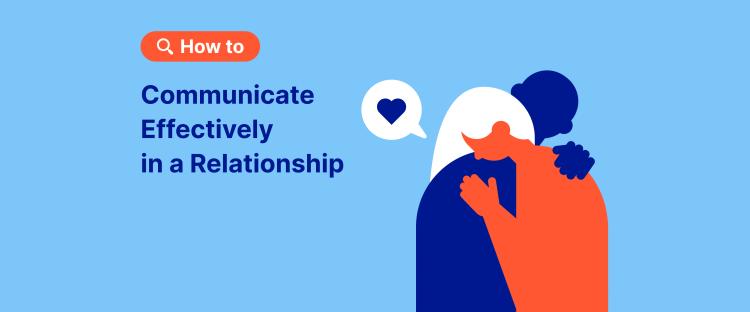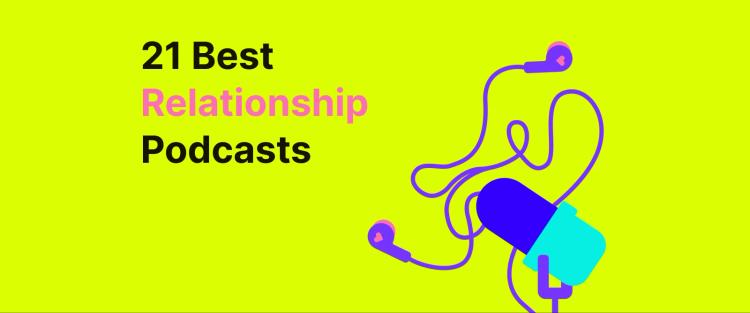Being a better girlfriend doesn’t mean changing who you are — it means becoming more of your true self. Not the overgiver, the fixer, or the one who loses herself in love, but the secure, kind, emotionally mature version of you. A good girlfriend is not defined by grand gestures, but by presence: showing up fully, consistently, and with mutual respect.
As a relationship coach with Addmile, I’ve helped women work through everything from dating anxiety to long-term relationship challenges. In this article, I’ll share psychology-backed tools, somatic practices, and real-world insights to help you build deeper connection — not just with your partner, but with yourself.
Quick guide: 10 habits of a better girlfriend
Here are a few core habits that define a better girlfriend:
Active listening: Be present and reflect on what you hear.
Love languages: Learn how your partner gives and receives love.
Independence: Respect their space and your own.
Emotional regulation: Pause, breathe, and respond — don’t react.
Support: Celebrate their goals and wins with genuine enthusiasm.
Personal growth: Continue to develop yourself outside of the relationship.
Date night: Schedule intentional time for fun and connection.
Quality time: Spend time with purpose, not obligation.
Clear communication: Speak from your point of view (using “I” statements) rather than blaming the other person.
Self-care: Take care of your emotional and physical well-being.
How to be a good girlfriend: Start with yourself
Before focusing on your relationship, focus on yourself. Relationship satisfaction is closely tied to emotional regulation, secure attachment, and self-esteem. In other words, the more you understand your emotional patterns, the more clarity and compassion you bring into your connection.
Books like ‘Attached’ by Amir Levine explain how attachment styles shape our needs, fears, and triggers in love. A good girlfriend doesn’t let anxiety run the show, but she doesn’t dismiss it either. She gets curious: What’s mine? What’s my partner’s?
John Gottman, a renowned couples therapist, also emphasizes emotional attunement — the ability to notice and respond to your partner’s emotional cues. This starts with noticing your own. Somatic tools such as breathwork, grounding, or body scans can help you regulate stress responses and show up with presence instead of reactivity. Presence is what allows you to communicate your needs and remain receptive to your partner.
“The more effectively you can communicate your needs, the more likely you are to get them met,” writes Amir Levine in ‘Attached’. “People who are secure in their relationships are able to be direct and honest about how they feel.”
Pro tip! Start with yourself: Emotional maturity and self-awareness are the foundation of a secure, healthy relationship.
Talk less, connect more: communicate like a pro

Good communication isn’t just talking — it’s listening, validating, and co-investing in emotional safety. A great girlfriend creates space where her partner feels seen, not judged.
Marshall Rosenberg’s ‘Nonviolent Communication’ framework offers a practical structure:
Observation: What happened?
Feeling: How do I feel about it?
Need: What need is behind this feeling?
Request: What am I asking for?
Instead of saying, “You never help me,” try, “When the dishes pile up, I feel overwhelmed and unsupported. Can we agree on a system?” It’s all about expressing your feelings and needs, not blaming others.
Communication is also about the little things: a simple 'thank you,' a long hug, or a brief three-minute check-in. When your partner feels consistently heard, they feel emotionally safe — that’s the foundation of a healthy relationship.
Pro tip! Work on your communication: Speak with empathy and honesty using nonviolent communication methods.
Speak their love language — literally
Love looks different to everyone. The way you express love might not fully resonate with your partner, just like their way of loving might not resonate with you. That’s normal and even common.
Let’s take a closer look at the five love languages:
Words of affirmation: Encouragement, compliments, appreciation.
Acts of service: Doing something helpful or thoughtful.
Receiving gifts: Meaningful tokens or surprises.
Quality time: Undistracted presence and shared experiences.
Physical touch: Affection through contact, like hugs and cuddles.
Often, if not always, tension in a relationship arises from unmet needs. “People tend to criticize their spouse most loudly in the area where they themselves have the deepest emotional need,” Gary Chapman explains in ‘The 5 Love Languages.’ “Our most basic emotional need is not to fall in love but to be genuinely loved by another.”
Don’t assume — ask. Take the quiz or reflect together. What fills your cup? What makes your significant other light up?
Explore this idea more in the Headway summary of ‘The 5 Love Languages’ by Gary Chapman.
Pro tip! Explore the love languages: Learn how your partner experiences love and meet them there.
How do you set healthy relationship boundaries that build trust?
Love thrives in freedom, not surveillance. A good girlfriend doesn’t nag, micromanage, or guilt-trip. She trusts — and lets go.
Signs you might be overcontrolling:
Monitoring: You check their messages or social media activity.
Jealousy: You feel uneasy when they hang out without you.
Unsolicited fixing: You try to “improve” their habits without invitation.
Excessive advice: You constantly nag or offer corrections.
Control-based validation: You seek closeness through control, not connection.
The antidote? Boundaries. To set boundaries is to declare what keeps you emotionally safe, not to punish or control your partner. It’s a way of saying, “Here’s how I can stay connected with you and true to myself.”
Here’s how to do it with clarity and care:
Get clear on your own needs firstYou can’t set a boundary if you don’t know what you need. Ask yourself: What drains me? What do I need more of to feel emotionally safe?
Use “I” statements, not blameFrame it as your need, not their flaw.Instead of: “You’re always on your phone,”Try: “I feel disconnected when we don’t make time to talk without screens.”
Be specific and concreteVague boundaries lead to confusion.Instead of: “I need space,”Try: “I’d like 30 minutes alone after work to decompress before we catch up.”
Stay calm, not confrontationalBoundaries are more likely to be respected when shared with warmth and steadiness, not emotional explosions. Practice it beforehand if needed.
Expect some discomfort, and hold steadyIf your partner gets defensive, it doesn’t mean you’re wrong. Stay kind but firm.“I know this is new for us, but I’m asking because I care about our relationship.”
Follow through consistentlyA boundary isn’t just something you say; it’s something you uphold. Consistency builds trust, both with yourself and your partner.
Make it mutualInvite your partner to share what they need. Boundaries go both ways — they’re about co-created emotional safety, not control.
A good girlfriend sets boundaries with love. She’s not cold or controlling; she’s honest and self-respecting. And the right partner won’t resent that — they’ll appreciate it.
Pro tip! Set clear boundaries: Healthy relationships require freedom, not control — set boundaries with compassion.
How to be a better girlfriend when you have anxiety
Sometimes, what feels like fading love is a nervous system in survival mode. If you feel triggered, overwhelmed, clingy, or cold, it might be your body, not your partner.
Common nervous system responses in relationships:
Fight: Irritability, picking fights.
Flight: Avoidance, retreating into other activities.
Freeze: Emotional shutdown, numbing out.
Fawn: People-pleasing to stay safe.

For better emotional regulation and deeper connection, start by noticing your glimmers — those brief moments when your body feels safe, calm, or open. A kind glance, sunlight through the window, a deep exhale — these subtle cues help shift your nervous system toward regulation. You can build on them with somatic tools like shaking it out, grounding, or even just a good cuddle. All of these reset the stress response and expand your capacity for connection.A good girlfriend doesn’t just manage her moods — she tends to her nervous system. She also invites her partner to participate in co-regulation. She knows that humans are wired for connection. When you breathe together, hug, or just sit in silence while being present, your nervous systems sync. This creates a sense of safety, which is essential for intimacy.
Pro tip! Protect your nervous system: Emotional dysregulation can feel like relationship issues — regulate your stress responses.
How can couples grow together emotionally?
Want to build a lasting relationship? Don’t just coast — collaborate. Share books. Talk about values. Learn new things together.
Topics to explore together:
“Emotions create habits. Not repetition. Not frequency. Not fairy dust. Emotions,” writes BJ Fogg in ‘Tiny Habits.’
Use the Headway app to dive into powerful ideas in just 15 minutes a day. Set a weekly date night to talk about what you’ve learned. Growth doesn’t have to be serious — it can include cuddles, snacks, and laughter.
Pro tip! Invest in shared growth: Evolve together through shared learning and intentional rituals.
Common traps to avoid in relationships
Let’s be real: You don’t have to become a fantasy character to be loved, but there are pitfalls to avoid:
Trying to fix them: A good girlfriend supports but doesn’t rescue.
Over-pleasing: Sacrificing joy for harmony leads to burnout.
Losing identity: If your world revolves around them, that’s codependency.
Acting out of insecurity: Testing, jealousy, or neediness signals unresolved emotional wounds.
A healthy relationship helps both people grow, not shrink. Love rooted in authenticity doesn’t ask you to perform, chase, or disappear — it invites you to become more fully yourself, side by side with someone doing the same.
Pro tip! Avoid these: Don’t fall into the traps of codependency, over-giving, or rescuing.
Support your partner — without losing yourself
Celebrating your partner’s wins is essential, but not if it comes at the cost of your own.
Balance: Applaud their efforts and protect your own goals.
Equity: Check-in — Are you showing up for yourself, too?
Respect: A great girlfriend cheers from the front row, not the shadows.
Real intimacy is when both partners feel seen, supported, and celebrated.
Pro tip! Support and selfhood: Celebrate your partner’s wins without sidelining your own.
Healthy love goes both ways
A great girlfriend doesn’t just give; she expects mutual care, too.
Shared effort: You shouldn’t always be the one planning date night.
Emotional support: Cuddles, deep conversations, and listening should be equal.
Reciprocity: True love is mutual, not one-sided.

Expecting effort isn’t demanding — it’s how you build a lasting relationship.
Pro tip! Work on mutuality: Expect — and offer — reciprocity in care, effort, and communication.
When is it time to leave a relationship?
Sometimes, trying to be a better girlfriend reveals a harder truth: the relationship itself isn’t serving you. Some red flags to watch for include:
Your needs are consistently dismissed
You’re carrying all the emotional labor
You feel smaller in the relationship, not supported
Ending a relationship isn’t a failure; it’s an act of emotional self-respect. If it’s time to walk away, do it with clarity, compassion, and care for both yourself and your partner.
Still, making that choice can feel overwhelming. That’s normal. We’re wired for connection, which makes letting go especially hard. If you’re feeling stuck or unsure, talking to a relationship coach or counselor can help you find the clarity and support you need.
Pro tip! Let go: Sometimes, the best choice is to leave a relationship that no longer supports you.
Redefine what it means to be a good girlfriend with Headway summaries
Let’s unlearn outdated ideas. A good girlfriend isn’t perfect — she’s real. She’s not performing a role but growing into the most emotionally aware, grounded version of herself. That’s where Headway helps: with bite-sized lessons from bestselling books like ‘Attached,’ ‘The Seven Principles for Making Marriage Work,’ and ‘Nonviolent Communication,’ you’ll build self-respect, emotional intelligence, and relationship skills — not for perfection, but for deeper connection.
What does a good girlfriend actually look like?
She shares emotional labor
Speaks honestly and apologizes with grace
Respects both closeness and independence
Knows herself and brings that fullness into the relationship
Being a better partner doesn’t mean being smaller. It means being more you.
Pro tip: Redefine the role. A good girlfriend is authentic, emotionally present, and self-respecting.
Try this reflection:
When do I feel like my best self in this relationship?
What makes me a good girlfriend — not by the Internet’s standards, but by mine?
What small shift could make our next date night more meaningful?
Reflect. Journal. Talk about it together. The little things matter most.
Small insights, big shifts: Build a better relationship today with Headway
Let’s recap:
Tune into your emotional landscape
Communicate from your point of view
Learn each other’s love languages
Don’t nag — create mutual agreements
Grow together with shared rituals like date nights
Let cuddles, quiet time, and laughter be part of your love life
Want to learn from world-renowned relationship experts in just 15 minutes a day?Explore the top-rated summaries in the Headway app — your better self (and relationship) will thank you.
Frequently Asked Questions on How to Be a Better Girlfriend
What does a better girlfriend look like?
A better girlfriend is emotionally present, communicates openly, sets healthy boundaries, and respects both her needs and her partner’s. She doesn’t perform for love — she shows up as her full self. She fosters mutual trust, supports growth, and co-creates a space where emotional safety and genuine connection can flourish.
How can I be more supportive without losing myself?
Support starts with presence, not self-sacrifice. Encourage your partner, celebrate their wins, and show empathy during hard times. But also protect time for your own hobbies, rest, and personal goals. Healthy relationships thrive when both people feel nourished, not drained. Balance care for them with care for yourself.
Is being a better girlfriend the same as changing for my partner?
No, true growth is self-directed, not based on pleasing someone else. Becoming a better girlfriend means healing your triggers, communicating clearly, and cultivating emotional intelligence. You’re not meant to mold yourself to fit someone’s ideal — you’re meant to evolve alongside a partner who values the real you.
What should I do if I feel like I nag too much?
If you notice yourself nagging, it may be a sign your needs aren't being clearly communicated or met. Try using “I” statements and the nonviolent communication model: express how you feel, what you need, and what you’re requesting. Focus on solutions, not blame, and invite your partner into shared responsibility.
How do I make date night more intentional?
Intentional date nights focus on presence, not performance. Set aside distractions like phones. Choose an activity that invites fun or connection, such as a walk, a game, or a values-based conversation. Ask questions like “What’s been on your mind lately?” or “What do you want to feel more of in our relationship?”













